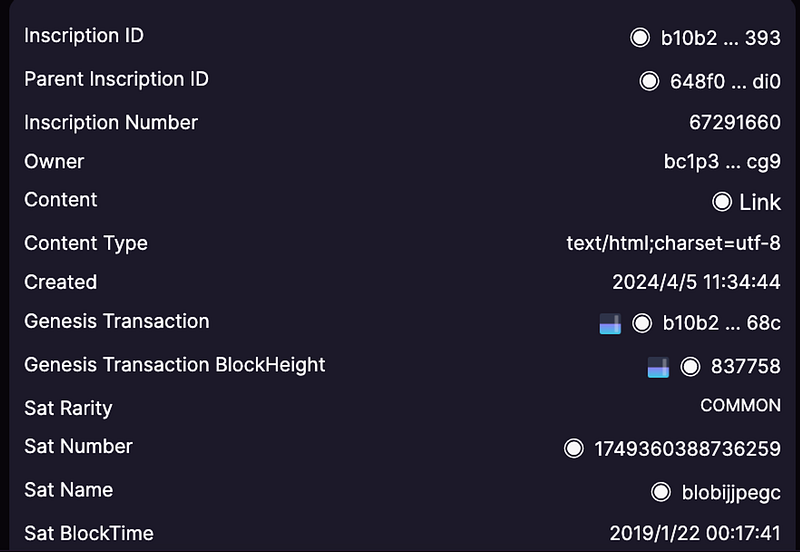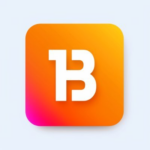
Author: Ash
On the evening of April 10th, BitSquare and the Blob Army team successfully hosted a Space event called “Send Blob.” The price of Blob NFTs reached a new high of 0.0716 BTC on April 11. As of the latest update, ME’s platform data shows that the total volume of Blob NFTs has reached 177 BTC. Over the past couple of weeks, tweets about #BlobArmy and #SendBlob have been frequent on Twitter. Additionally, images featuring the Blob NFTs’ iconic laser eyes have been widely shared on social media. Let’s explore why this emerging BTC NFT has become so popular within a week.
What is Blob Army?
BLOB is not a transaction type introduced in Ethereum’s EIP4844. A few days ago, a photo of Vitalik speaking at the Hong Kong Web3 conference was edited to add Blob’s iconic laser eyes, giving it an abstract and somewhat artistic flair. It stands for ‘Bitcoiners Love Bitcoiners’ and also represents ‘Binary Large Object’ in computing, indicating a large binary data storage object. Besides its multilayered name, its founders are two OGs from the Ordinals community, @Elocremarc and @nurorealm. To attract prominent participants from the Chinese-speaking Ordinals ecosystem to BLOB, the project team prioritized Ordinals OGs, artists, and developers in their early whitelist allocations. The BLOB project initially aimed for a Free Mint NFT release but opted for a free airdrop similar to Runestone. Blob has strong meme characteristics, and it uses red and yellow laser eyes for promotion. It also encourage holders to create BLOB art for widespread. This method is highly infectious and has dramatic appeal.
Technology of Blob
The Blob team boasts a remarkable lineup, including Ordinals protocol contributor @Elocremarc, NFT project Ordinals Gang’s @ordinalHO, and Ordinals OG artist @nurorealm, among others. These individuals are talented and dedicated. The project, planned for nearly a year, showcases their technical prowess through efforts like preparing JavaScript libraries and collecting specific satoshis. The team utilized numerous techniques on BTC Ordinals, such as parent-child inscriptions, recursive inscriptions, Delegate, and metadata, to present a BTC NFT that incorporates multiple technologies.
Blob utilizes four recursive inscriptions in total. One serves as the loading screen logo, while the remaining three are composed of JavaScript libraries. These are not animated images; instead, they dynamically change color and style by reading the metadata and id of the inscriptions. The shader code enhances Blob’s artistic visual effects, merging programming technology and art perfectly, offering both abstract artistry and technical richness.
Inscription 65906960 serves as the logo displayed during the loading screen. Inscription 65166480 is a code snippet that acts as a TypeScript library for handling recursive endpoint data retrieval, defining functions for extracting data from specific URL structures, and retrieving metadata and indexes. Inscription 67207153 contains code for Blob’s visual effects, including shader code snippets for generating various visual effects. Inscription 62969441 defines functions for interacting with recursion to fetch data, mainly retrieving information about inscriptions and specific satoshis.


The characteristics of Blob NFTs
Based on the code from Inscription 67207153, one can deduce the typical characteristics of Blob NFTs. @blobnw has provided a detailed explanation and introduction to these features:
“Art.” This term here relates to creating animations that simulate the effect of wind blowing, by altering vertex positions to mimic the movement of objects in the wind.
“Taffy.” This term refers to generating an effect that simulates energy flowing by dynamically changing vertex positions.
“Twist.” This technique involves creating distortion effects by calculating and dynamically altering the positions of vertices based on their distance from a central point, often visualized as a sphere. This method allows for the creation of complex.
“Compression.” Similar to the “twist” technique, but specifically used to create a compression effect.
“Dance.” This technique manipulates the dynamic adjustment of a sphere’s radius and vertex positions to simulate the merging and separating of spheres, creating a dynamic “dance” effect.
“Electric.” This technique generates an effect resembling electrical shocks by incorporating random jitter and pulse effects to simulate the visual of electricity flowing across a surface.
“Knead.” This technique creates an effect similar to kneading or undulating by periodically changing the positions of vertices.
“Live.” This technique combines basic undulating movements with dynamically generated “spike” effects to simulate a vivid, dynamically changing surface.
“Mystery.” This technique creates a mysterious pattern that incorporates random noise and color gradients.
“Cultural.” This technique simulates the visual effects of specific cultural themes by blending different colors and patterns.
“Social.” This technique creates visual effects that simulate the gloss and dynamic ripple effects seen in social settings.
“Environmental.” This technique generates visual effects that simulate natural environments, such as forests and grasslands.
“Spiritual.” This technique employs dynamic patterns and color gradients to create an atmosphere that is spiritual or mystical.
“Emotion.” This technique generates visual effects that simulate emotional fluctuations, using colors and dynamic patterns to express various emotions.
“Mental.” This technique creates visual effects that simulate mental activities or psychological states through complex patterns and color transitions.
It’s understandable that when we showcase this NFT, it’s not just a looping animated image. If we use the mouse to drag, the Blob will rotate accordingly, which has a very artistic attribute. Early Ordinals NFTs were pixel-style, with small file sizes, such as the earliest Bitcoin frogs. With the advent of recursive inscription technology, there emerged some non-pixel-style NFTs formed by code. Now, with more technologies applied, Blob has introduced new variations to BTC’s NFTs, completely different at the technical level from previous NFTs. We hope that such NFTs, employing multiple technologies, will help the entire Bitcoin ecosystem evolve in a more positive direction.
The Blob Team, Community, and Future
One reason we appreciate the BTC ecosystem and Ordinals protocol is their reflection of our valued principles of fairness and community consensus, exemplified notably by Blob. Initially, the team devoted considerable time to refining the technical and artistic aspects of the NFT. The founders funded the NFT minting themselves and directly airdropped them to community members, allowing users to own their Blob without any cost. During the six-day airdrop period, the team only rested for one day to participate in NFTNYC2024. This commitment was visible when the founders @nurorealm and @Elocremarc inscribed Blob across New York, at events and even under Times Square’s giant Blob screens. The team prioritizes community building by targeting drops to Ordinals OGs, artists, and developers. The community actively promotes Blob through art and technology, enhancing its visibility on Twitter with initiatives like “Send Blob” and the iconic laser eyes. With such a robust team and community, the future of Blob Army alongside the BTC ecosystem looks increasingly vibrant and diverse!
Ending this piece with the resounding cheers from the close of the Space event: Blob! Blob! Blob!
About us
Bitcoin Square is a Bitcoin ecological and alpha community established in May 2023. We are committed to providing the latest market dynamics, professional market analysis, and a community environment with an investment research spirit.


